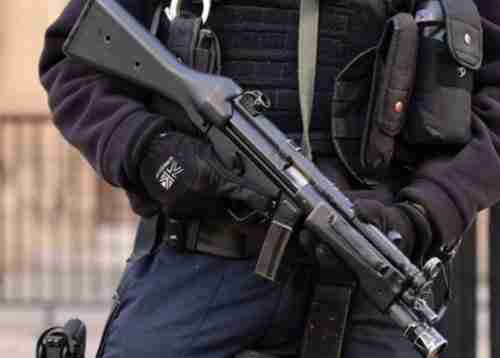Death From The Sky
The ‘drone’ is emerging a favourite weapon of the powerful western countries: giving them hi-tech capabilities with no damage to their own lives and equipment, since these are mostly invisible—operating from as high as 50,000 feet—until they strike. Officially called UAV (unmanned aerial vehicle), it can hover in the skies for up to 24 hours to watch every action of its intended victim, until it delivers death. No wonder, drone operators, often sitting in their air conditioned centres, are said to be infatuated by this weapon, the actions of which apparently leave them electrified.
In recent years, the US drone targets have largely been “suspected terrorists” in the tribal regions of Pakistan and Yemen, as also in Afghanistan and Somalia. But “suspected terrorists” apart, drone strikes take a significant toll of innocent lives, dismissed as collateral damage. A study by Columbia Law School’s Human Rights Institute estimates that 98 per cent of drone strike casualties are civilians (50 for every “suspected terrorist”)! Furthermore, some critics allege that apparently the US would rather kill suspects than put them in a Cuban detention centre.
The US officials claim that drone strikes have killed few civilians, but independent reports confirm that Washington is severely downplaying the damage. Any legal inquiry on drone attacks has met with strong resistance in the US. The CIA claims that the US drone attacks take place with due legal and governmental oversight. And John Brennan, a former aide of President Barack Obama, now with the CIA, has argued that the US would prefer to move from CIA-led strikes that are deniable to military-led strikes that are transparent.
However, those who defend the use of drones—the signature item of the Obama administration’s foreign policy—say that these attacks are on those inaccessible areas where troops cannot be sent. But then, will there be some rules of engagement, or will the drone operators continue to strike without censor? Experts in the US say that drones operate like any other military aircraft, except that its pilot is on the ground and not on board, so there is no need for new rules. But how does one prevent collateral damage? Nobody has answers for that yet.
A large number of Americans view the ‘drone’ as an absolute weapon of choice. Thus, President Obama has made it known that drone strikes will continue, regardless of the resentment these cause against the US in countries like Pakistan. An estimate says that over the next decade about 30,000 drones will fly in the US air space itself. By 2012, the US had commissioned about 20,000 drones—following extensive lobbying by military manufacturers like General Atomics and Lockheed Martin—with the UK, Russia and China following suit. India, for the moment, plans to use them for intelligence gathering and not cross-border strikes.
And even though a few phrases in post 9/11 mandates give the American president sweeping war-making powers, the US is now conscious of the fact that it is fast losing the moral high ground. Its closest allies are finding it difficult to defend such attacks, and earlier supportive governments, like that of Pakistan, are now openly critical of the drone strikes. Obama has thus committed himself to tighter controls in future. This would include—apart from oversight by the US Congress—the establishment of an independent overseer and special courts to authorise killings. Most of his guidelines are still classified, and not public. But if the US wants to set the rules of this game, it must adopt the highest standards itself. More so in the case of Obama, who is the recipient of a Nobel Peace Prize.
(The authors are with Security Watch India, an Counter Terrorism Initiative. These are their personal views.)
Maroof Raza, an ex-army officer, is publisher of Salute, a fortnightly on the armed forces, and strategic affairs consultant on newschannel Times Now.


